Biography
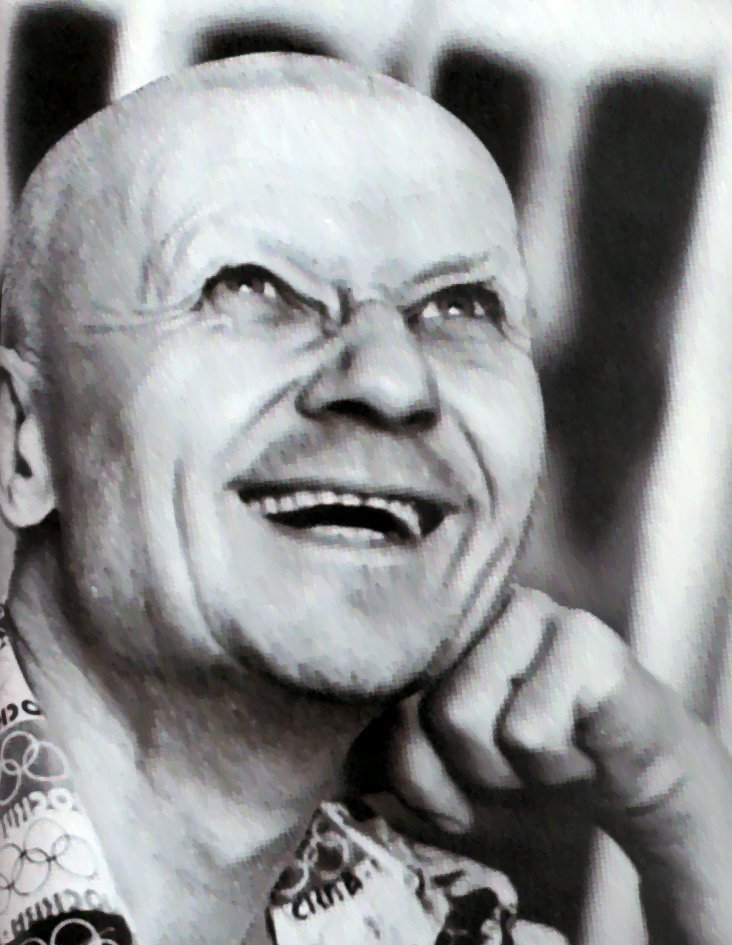
Andrei Romanovich Chikatilo was born on 16th October 1936 in Yablochnoye, a village in the heart of rural Ukraine, within the USSR.
In addition to the external hardships, Chikatilo is believed to have suffered from hydrocephalus (or water on the brain) at birth, which caused him genital-urinary tract problems later in life, including bed-wetting into his late adolescence and, later, the inability to sustain an erection, although he was able to ejaculate. His home life was disrupted by his father’s conscription into the war against Germany, where he was captured, held prisoner, and then vilified by his countrymen for allowing himself to be captured, when he finally returned home. Such was the political control exercised in the Soviet Union at that time that the young Chikatilo suffered the consequences of his father’s “cowardice”, making him the focus of school bullying.
He failed his entrance exam to Moscow State University, and a spell of National Service was followed by a move to Rodionovo-Nesvetayevsky, a town near Rostov, in 1960, where he became a telephone engineer. His younger sister moved in with him and, concerned by his lack of success with the opposite sex, she engineered a meeting with a local girl, Fayina, whom he went on to marry in 1963. Despite his sexual problems, and lack of interest in conventional sex, they produced two children, and lived an outwardly normal family life. In 1971, a career change to school teacher was short-lived, when a string of complaints about indecent assaults on young children forced him to move from school to school, before he finally settled at a mining school in Shakhty, near Rostov.
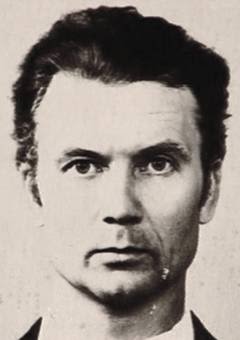
The Crimes
On 22nd December 1978, Chikatilo killed his first documented victim; 9 year old Lena Zakotnova was lured into an abandoned shed, where Chikatilo tried to rape her. Trying to control the struggling child, Chikatilo slashed her with a knife, ejaculating whilst doing so, confirming his psychological connection between violent death and sexual gratification that went on to typify all future attacks.
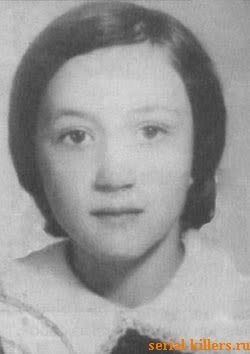
Perhaps as a result of his close brush with the law, there were no more documented victims for the next three years. Still dogged by claims of child abuse, Chikatilo found it impossible to find another teaching post, when he was made redundant from his mining school post, in early 1981. He took a job as a clerk for a raw materials factory in Rostov, where the travel involved with the position gave him unlimited access to a wide range of young victims, over the next 9 years.
On 3rd September 1981, Larisa Tkachenko, 17, became his next victim, strangled, stabbed and gagged with earth and leaves, to prevent her crying out. The brutal force afforded Chikatilo his sexual release, and he began to develop a pattern of attack that saw him focussing on young runaways of both sexes, whom he befriended at train stations and bus stops, before luring them into nearby forest areas, where he would attack them, attempt rape and use his knife, as a penis substitute, to mutilate them. In a number of cases he ate the sexual organs, or removed other body parts such as the tips of their noses or tongues. In the earliest cases, the common pattern was to inflict damage to the eye area, slashing across the sockets and removing the eyeballs in many cases, an act which Chikatilo later attributed to a belief that his victims kept an imprint of his face in their eyes, even after death.
At this time serial killers were a virtually unknown phenomenon in the Soviet Union, whether as a result of suppression of information, or wider cultural differences between Soviet and Western societies. Evidence of serial killing, or child abuse, was often suppressed by State-controlled media, in the interests of public order. The eye mutilation was a modus operandi distinct enough to allow for other cases to be linked, when the Soviet authorities finally admitted that they had a serial killer to contend with. As the body count mounted, rumours of foreign inspired plots, and werewolf attacks, became more prevalent, and public fear and interest grew, despite the lack of any media coverage.
When a further 15 victims were added during the course of 1984, police efforts were increased drastically, and they mounted massive surveillance operations that canvassed most local transport hubs. Chikatilo was arrested for behaving suspiciously at a bus station at this time, but again avoided suspicion on the murder charges, as his blood type did not match the suspect profile, but he was imprisoned for 3 months for a number of minor outstanding offences.
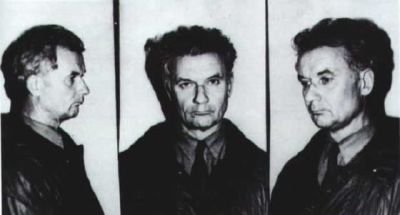
What was not realised at the time was that Chikatilo’s actual blood type, type A, was different to the type found in his other bodily fluids (type AB), as he was a member of a minority group known as “non-secretors”, whose blood type cannot be inferred by anything other than a blood sample. As police only had a sample of semen, and not blood, from the crime scenes, Chikatilo was able to escape suspicion of murder. Today’s sophisticated DNA techniques are not subject to the same fallibility.
Following his release, Chikatilo found work as a travelling buyer for a train company, based in Novocherkassk, and managed to keep a low profile until August 1985, when he murdered two women in separate incidents.
At around the same time as these murders, Burakov, frustrated at the lack of positive progress, engaged the help of psychiatrist, Alexandr Bukhanovsky, who refined the profile of the killer, describing him as a “necro-sadist”, or someone who achieves sexual gratification from the suffering and death of others. Bukhanovsky also placed the killer’s age as between 45 and 50, significantly older than had been believed up to that point. Desperate to catch the killer, Burakov even interviewed a serial killer, Anatoly Slivko, shortly before his execution, in an attempt to gain some insight into his elusive serial killer.
Coinciding with this attempt to understand the mind of the killer, attacks seemed to dry up, and police suspected that their target might have stopped killing, been incarcerated for other crimes, or died. However, early in 1988, Chikatilo again resumed his killing, the majority occurring away from the Rostov area, and victims were no longer taken from local public transport outlets, as police surveillance of these areas continued. Over the next two years the body count increased by a further 19 victims, and it appeared that the killer was taking increasing risks, focussing primarily on young boys, and often killing in public places where the risk of detection was far higher.
Los medios sin trabas recientes de la sociedad Glasnost de Gorbachov ejerció una enorme presión pública sobre las fuerzas policiales para atrapar al asesino, y se intensificaron las patrullas policiales en general, con Burakov apuntando a áreas probables con policías encubiertos en un intento de expulsar al asesino. Chikatilo evadió la captura por un estrecho margen, en un par de ocasiones, pero el 6 de noviembre de 1990, recién llegado de matar a su última víctima, Sveta Korostik, su comportamiento sospechoso fue observado patrullando policías en la estación cercana, y sus detalles fueron tomados. Su nombre estaba relacionado con su arresto anterior en 1984, y fue puesto bajo vigilancia.
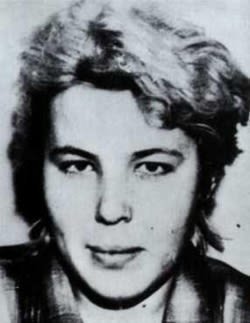
The Arrest
Chikatilo was arrested on 20th November 1990, following more suspicious behaviour, but he refused at first to confess to any of the killings. Burakov decided to allow the psychiatrist, Bukhanovski, who had prepared the original profile, to talk to Chikatilo, under the guise of trying to understand the mind of a killer from a scientific context. Chikatilo, clearly flattered by this approach, opened up to the psychiatrist, providing extensive details of all of his killings, and even leading police to the site of bodies previously undiscovered.
He claimed to have taken the lives of 56 victims, although only 53 of these could be independently verified. This figure was far in excess of the 36 cases that the police had initially attributed to their serial killer.

The Trial
Having been declared sane and fit to stand trial, Chikatilo went to court on 14th April 1992, and throughout the trial he was held in an iron cage designed to keep him apart from the relatives of his many victims. Referred to in the media as “The Maniac”, his behaviour in court ranged from bored to manic, singing and talking gibberish; at one point he was even reported as having dropped his trousers, waving his genitals at the assembled crowd.
Notice that uselessness, what do you think I was going to do with that?
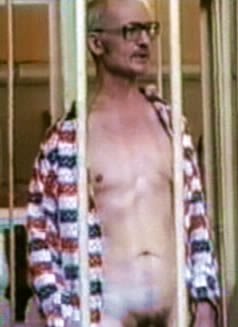
The judge appeared less than impartial, often overruling Chikatilo’s defence lawyer, and it was clear that Chikatilo’s guilt was a foregone conclusion. The trial lasted until August and, surprisingly, given the judge’s bias, the verdict was not announced until two months later, on 15th October 1990, when Chikatilo was found guilty on 52 of the 53 murder charges, and sentenced to death for each of the murders.
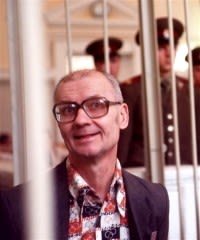
The Aftermath
Chikatilo’s appeal centred around the claim that the psychiatric evaluation which had found him fit to stand trial was biased, but this process was unsuccessful and, 16 months later, he was executed by a shot to the back of the head, on 14th February 1994.
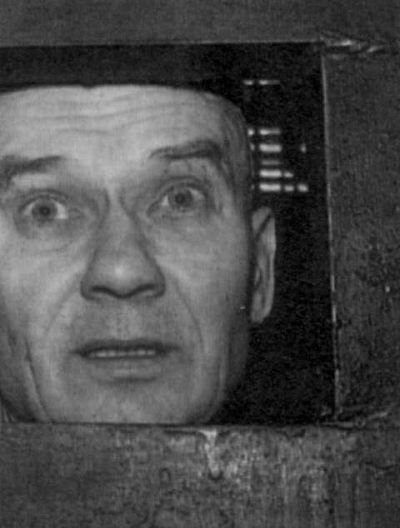
Your Post Has Been Featured on @Resteemable!
Feature any Steemit post using resteemit.com!
How It Works:
1. Take Any Steemit URL
2. Erase
https://3. Type
reGet Featured Instantly � Featured Posts are voted every 2.4hrs
Join the Curation Team Here | Vote Resteemable for Witness